Osteochondrosis is the most common cause of back pain.Damage to the intervertebral discs that are based on the development of the disease in any second person who reached the age of 40 and by the age of 50 70% of the population is wonderful.At the same time, osteochondrosis is increasingly found today young people and even adolescents.Intervertebral hernia, radicalolite, brain supply disorders - these are complications of osteochondrosis that threaten disability and often lead to disability.
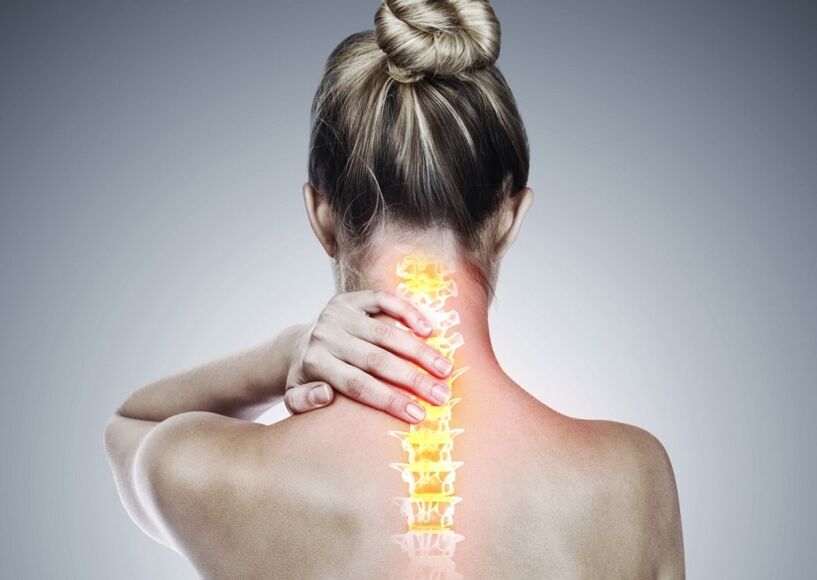
Currently, effective treatment methods that allow not only the removal of symptoms, but also to restore the destroyed areas of the vertebrae, is almost not in conventional medicine.Therefore, it is so important to understand which factors lead to the destruction of the discs, and what to change in their lifestyle to stop the development of osteochondrosis.And what measures should be taken to manage existing changes and launch spinal recovery processes.
What is osteochondrosis?How is the disease going?
Osteochondrosis is a disease in which the destruction processes in the spinal cord segment begin to reign in the processes of healing, which is back pain, restriction of mobility, etc.Restrictions, etc.During the onset of the disease, the intervertebral hernia (radiculopath), Ishias and other complications may occur.
The intervertebral plate (hereinafter referred to as "disk") is a elastic tissue ring whose fibers are woven into a upper and underlying vertebrae.Thanks to its special structure, the intervertebral disk protects each vertebra from destruction and ensures the mobility of the entire spine (small, twist).
In the middle of the intervertebral disc has a pulpi core resembling a rubber cushion filled with a liquid.In adulthood, it consists of 70% of water and carbohydrates that can bind and add water.At the time of the load on the proper spine, the seed gives the water and the flatterers, and after the effect ceases in the previous form.Such a shock -absorption pad allows the spine to vaccinate up to 80% of the shock load in the spring and the spine.
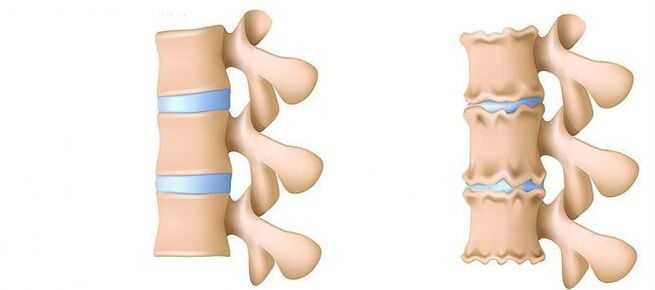
Degenerative-dynight processes most often begin with the shock-absorbing function of the intervertebral disk.
- Damage of blood supply to the intervertebral disk- In adults, the food of intervertebral discs is done with diffusion: blood is transported only to the vertebrae and they are "leaking" into the discs through them.Best of all, the disk is nourished during dynamic loads (such as walking) because the principle of the pump (the outflow of processed fluid during condensation, nutrient flow and the flow of oxygen when the load is removed).Thus, the nutrition of intervertebral discs is difficult especially in the conditions of sedentary lifestyle (hypodymia).
- Changes in the pulpic disk core- With the deterioration of blood supply, the supply of water, sugars and amino acids is disturbed by pulpone seeds.As a result, the production of carbohydrates connecting the water suffers.The seed is dehydrated, the gel -like structure is fiber, the spring and the ability to vaccinate deteriorate.This increases the load on the fibrous ring and the vertebrae, which is more likely to block and injure.
- Changes in the fibrous ring of the intervertebral disk- Due to the flattening of the pulpona core, the increased load is located on the fibrous disc.In case of poor blood supply, the fibrous ring loses its strength.The instability of the spine can lead to the formation of a vertebral hernia, the displacement of the vertebrae and the damage to the spinal cord or nerve roots.
- Tile- The formation of hernia between the vertebrae.As the fibrous ring fibers weaken, the pulpic core begins to push, for example, towards the intervertebral channel (protrusion of the plate).Such a shocking can lead to interrupting a fibrous ring and the formation of the hernia.Further information on the process of developing the intervertebral hernia in a separate article - "Effective treatment of the vertebrae at home".
- Spondylosis - destruction of intervertebral joints (spondylartrosis), growth of osteophytes and bone bone- In parallel with the formation of intervertebral hernia, we observe osteochondrosis, damage to intervertebral joints, destructive changes in vertebrae (cartilage).
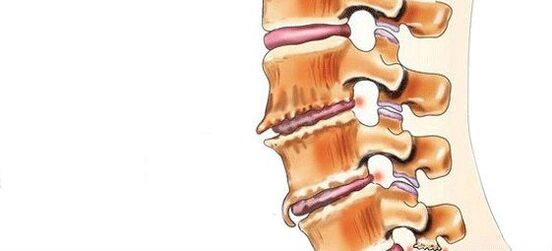
Since the shock of the intervertebral disk is not performed, the joints of the vertebrae and the small vertebrae are constantly injured.
The instability of the spine is also the cause of damage to the body of the vertebrae and the cartilage of the joint processes.As a result of the bone tissue increases, osteophytes appear(From Greek: Osteo - Bone, Fito - Plant)- Bone growth.The appearance of osteophytes is popularly called the formation of spikes or salts.
- Osteophytes can constantly irritate the spine segment ligaments, which gradually leads to bone and limiting the movement of the spine.
- The osteophytes can also be damaged in nearby soft tissues, which result in the accumulation of dead cells to which the body responds to inflammation (edema).
- The osteophytes on the surface of the vertebrae damage the fibrous ring fibers on the surface of the intervertebral discs, accelerating the formation of the hernia.Increasing osteophytes towards the intervertebral channel enhances compression of the spinal cord, blood vessels, and nerve roots.
- The increase in osteophytes can lead to wrapping of adjacent vertebrae and a complete loss of mobility in the spine segment.
Symptoms and signs
Symptoms and signs of osteochondrosis - back pain!Initially, back pain may result from the surge of the rear muscles that try the excessive moving center of the vertebrae (section 3), so the muscles protect the spinal cord of the spinal cord.The spinal cord is the central part of the nervous system, so the body tries to prevent its damage (tightening, irritation).After that, the cause of the pain is the vertebrae of the vertebrae, and the hernial protrusion is small.At the time of the appearance of the hernia, a person usually feels severe pain (called the cervix or lumbar lader).

Because of the back pain, one inadvertently strives to be in a position in which the intensity of the pain is reduced - the so -called, forced poses.However, the spine is not in a violent position that reduces the depreciation of the discs.This increases the risk of further damage.
As the infringements have progressed in the joints, the development of the spinal bodies, the joint surfaces and the ligaments of the league begins to lose mobility.Partial and then complete restrictions on the movement of the affected spine.
Complications of osteochondrosis of the spine
There are many stages of the development of the spine osteochondrosis.Their press depends on the class in which the devastating process occurs.
- Discogenic radiculite (radiculopathy), in which the hernial protrusion tightens the nerve root (a bunch of nerve fibers that extend from the spinal cord and then divide it into nerves to one or another area of the body).Pain is due to the mechanical effect of the hernia on the spine and the addition of inflammation (edema).
- Vascular-brown syndrome, in which the vessels are printed that nourish the roots of the spinal cord.This is manifested in the hands (by osteochondrosis of the cervix) or by the lower limbs (lumbosac) and by loss of sensitivity.With this complication, the work of the internal organs can suffer in which the affected nerves (urination, sexual function, bowel work, etc.) can develop, hypertension and memory deterioration occurs.Occasionally, the vascular violation occurs suddenly, with sharp movement in the affected area of the spine - more often in the lower back.Sharp pain and muscles sudden weakening on the affected side - syndrome "paralytic".
- Violation of blood supply to the spinal cordThe cause of compression of the spinal cord nutritious vessels.The extreme degree of complication is an ischemic spinal cord.The result of this complication is the limbs (paresis, paralysis), the loss of sensitivity, the deterioration of the work of the internal organs for complete denial.In some cases, this can lead to the death of the patient, for example, when kidney function suffers severely.
Symptoms of Discogenic Radiculitis depend on the spine:
| Location | Symptoms and signs |
|---|---|
| Cervix, cervix-plant radiculite | Depending on the damage, pain and sensitivity of the neck, shoulder, forearm, fingers.Muscle weakness can also be observed in these classes. It is often connected to the neuralgia of the occlital nerves, in which severe pain is observed at the back of the head.Arrhythmia can occur. |
| Lumbar crossroads | This is the pain at the lower back, which is often combined with the pain in the sciatic nerve - Izhias, ishiradiculite.The weakness of the leg muscles also develops, violation of the thigh sensitivity, lower legs and legs can occur. |
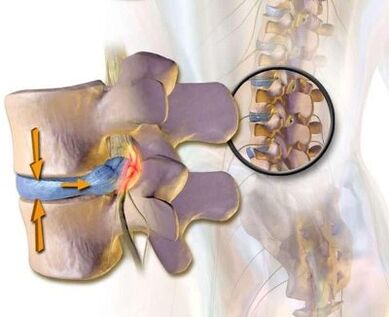
The displacement of spinal bodies or intervertebral discs may require urgent surgical intervention later by pressing blood vessels and nerve roots.
Causes of the formation of osteochondrosis of the spine
Osteocondrosis is called a multifactoral disease - that is, there are many reasons for its occurrence.Here we will highlight two key factors that gradually lead to the defeat of the intervertebral plates and to later changes in the spine:
- Deterioration of power supply conditions for intervertebral discs and cleaning tissuesOr
- Excessive load to the spine leading to the accumulation of dead cells in the spine segment tissuesOr
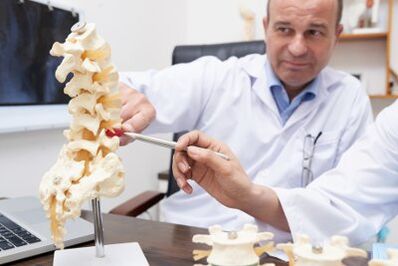
Refreshing the tissues of the intervertebral discs depends on the amount of flow between blood flow and lymphatic, directly into the intervertebral discs, neither blood nor lymphatic vessels are appropriate (which serve in the body to clean the tissues).The disk food and cleaning are done indirectly, ie slowly.This is the reason why this area does not only occur quicklynutrient deficiency and oxygen starvationbut fast tooDamaged and dead cells accumulateand the elaboration of materials.There is a need to clean the tissues from the "slags", otherwise there is no room for new functional cells, and then the tissue gradually loses its function (for example, the pulpona core of the disc is eliminated until spring, depreciation and slowly flattened).
Refreshing the tissues of the intervertebral discs depends on the amount of blood flow and lymphatic flow.The speed and strength of these processes are influenced by muscle microvibration (mainly) in the back muscles during physical stress.In this regard, one of the reasons for feed and cleaning is hypodynamia when the back muscles relax or are in a static position.
With the development of osteochondrosis, blood supply, lymph and venous outflow in the spine deterioratesmuscle spasm- The body gives the muscles a signal to keep the vertebrae in a certain position in the affected area.For a long time, excessive muscles squeeze the vessels for a long time, which further exacerbates the situation.
It is obvious to most people that the spine may suffer from an unusual sharp increase in weights or, however, may be daily damage and may not be tangible in case of violation of the neuromuscular depreciation system.Constant microtraums lead to the accumulation of dead cells under weak lymphatic flow conditions, prevents the growth of functional cells, and further lead to the bone of the tissues.
Violation of neuromuscular depreciation as one of the main causes of osteochondrosis
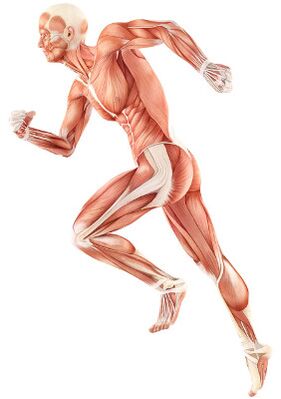
Violation of neuromuscular depreciation is one of the main reasons for osteochondrosis to reduce the load of the spine for walking, weight lifting, etc.This is ensured by the functioning of the body's nervous system and skeletal muscles, which, in agreement, interacts to ensure seamless movements and to extinguish bones, joints and, of course, the shock of the spine.So most of the shock load has to extinguish their legs.In addition, the legs and back muscles are involved in depreciation.If this does not happen (for example, uncomfortable, high -ranking shoes do not allow the foot to work), intervertebral plates are subjected to shock to which they are not intended.Below are the factors that lead to the discretion of the neuromuscular depreciation system:
- A violation of posture-different types of spine curves that prevent him from using "spring", using non -physiological furniture in the office, etc.
- Infringement, running techniques (correctly while running, weight from toe to the corner);
- High on them or without a heel, which negatively affects the leg depreciation.
- Overload(Sports play, exhaustive physical work), traumatic joints and spine
- Obesity- overweight moves the body's center of gravity, and adipose tissue complicates the blood supply to the muscles and the behavior of nerve impulses;
- Driving in transport without sitting, without depreciation (in standing position to spring with his leg);
- Disorders of the nervous system function, such as frequent use of painkillers, which negatively affect the neural conductivity.
- To interrupt the kidneysIn the body of decomposition products due to excessive formation.This can be associated with insufficient physical activity - a prerequisite for the lymphatic system, which is from the metabolism of tissues and dead cells, as well as for cleaning tissues and cleaning of tissues, as well asLiver disease, chronic focus of inflammationetc.
Hypodynamics
One of the causes of widespread osteochondrosis in recent decades is the epidemic of sedentary lifestyle.The rear and press muscles and the press are not involved and weaken quickly in the usual life, and strong muscles are needed for the health of the spine, which are not overloaded with static tension but dynamic work.The rear muscles are the fastest weakening with the hypodyny, which has the following consequences:
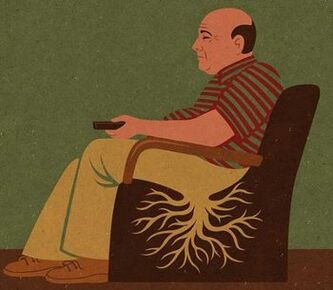
- The spine is not sufficient support for careless movements, leading to overloading of discs between the vertebrae, moving the vertebrae and the occurrence of intervertebral hernia.
- Damage to the blood supply of the spine: The dynamic work of skeletal muscles is a prerequisite for all organs, including blood flow to the spine.As a result of insufficient functioning of the rear muscles, destructive changes in discs between the vertebrae are advanced - cells die due to nutrients and lack of oxygen.And dead cells accumulate, disturbing the recovery.
- The deterioration of lymphatic flow and venous outflow leads to the accumulation of dead cells in tissues.The work of the skeletal muscles is particularly important for the work of the lymphatic system, as most of its vessels (such as lymphocapillary) have no muscle walls and the lymphatic "pushes" in the blood vessels depends on the work of the skeletal muscles.
4 Principles of Effective Treatment
In order not only to remove the symptoms, but also to treat the causes of osteochondrosis, spondylosis, radiculitis and isias:
- Create opportunities for cleaning tissues from dead cells.This is the condition for healing to prevent further formation of osteophytes and release the tissue regeneration space.To do this, restore/reinforce the lymphatic current and venous outflow from the affected segments;
- Enhances blood supply to the affected area;
- Improve the sounds of all the muscles of the spine.This allows:
- Create conditions for stimulationownblood flow and lymphatic flow in the spine;
- Restore the operation of the neuromuscular depreciation system needed to properly support the spine to prevent new damage.
- Remove the pain because this gives you the opportunity:
- Remove the musculoshes that block the bloodstream in the spine;
- Avoid forced poses.
Medication (medical) therapy
Nowadays, the following groups are used to treat osteochondrosis and its complications:
- Necepoid anti -inflammatory drugs (NSAID)- Injections of tablets or medicines.These bases are able to reduce pain and reduce inflammation activity.However, the effects of their use do not last long - from a few hours to two to three days.Therefore, these funds must be accounted for for a long time - weeks and sometimes for months.At the same time, these drugs negatively affect the gastrointestinal tract mucosa membrane.Their long -term bets are full of gastritis, with ulcerative lesions.In addition, they can negatively affect the work of the kidneys, liver and contribute to hypertension.And at the same time, these bases do not contribute to cleaning the discs from dead cells.Therefore, their use is only used to relieve the symptoms for a while, but the main problem should not be eliminated.
- Cteepoid (Gopmonal) Anti -Inflammatory Medicines- As a general rule, it is used for severe and impenetrable pains that have hernia, radiculitis, isias, etc.Gopons are able to eliminate the manifestations of inflammation (due to suppression of the immune system) and alleviate pain.At the same time, they negatively affect the membranes of the stomach and intestinal mucosa, promote calcium washing out of the bones, and inhibit the production of their own gopons.And does not contribute to cleaning the focus of dead cells.
- Papasmolic- Medicines that affect the muscles or nerves that go to the muscles and cause relaxation of skeletal muscles.This means that they help relieve muscleolles for a while, reduce pain and improve bloodstream.But at the same time, they do not help cleanse the tissues from dead cells.Therefore, they do not contribute to the cure of osteochondrosis.
- Epiduvision blockade- Introduction of painkillers and goponal agents into space between solid brain shell and periosteum covering the vertebrae.It is usually used for intense pain - during the acute period of the intervertebral hernia, severe radiculitis, isias.Depending on the composition, such a injection will help relieve pain for several hours for several days.After the expiry date, the manifestations of the disease are returned because the procedure does not help to restore the metabolic processes of the discs.In addition, when executed, there is an injury to blood vessels and nerves.

As the development of osteochondrosis and complications developsYou should start more and more often with medication, increase the doses- This leads to high financial costs and further deterioration of health due to the side effects of drugs.
Medication therapy is usually complemented by immobilizing one or friend of the spine with a variety of rigid orthopedic corsets.
























